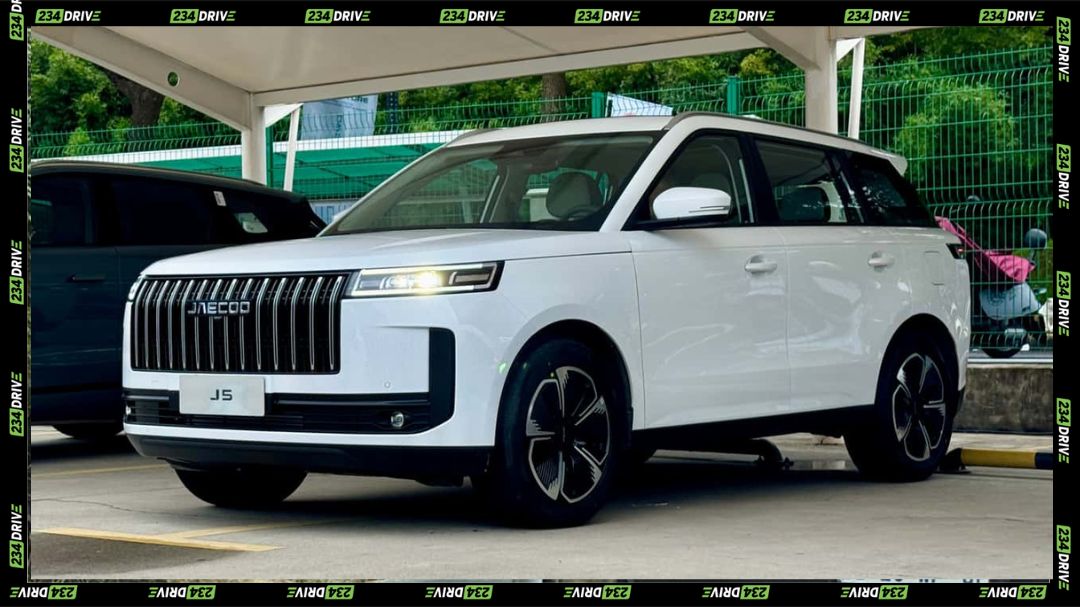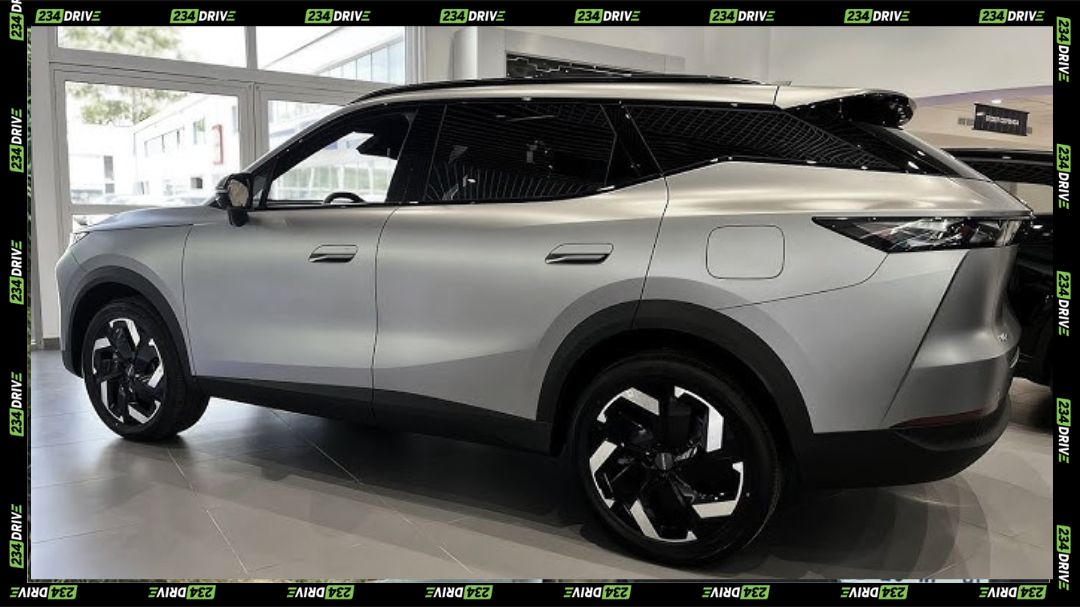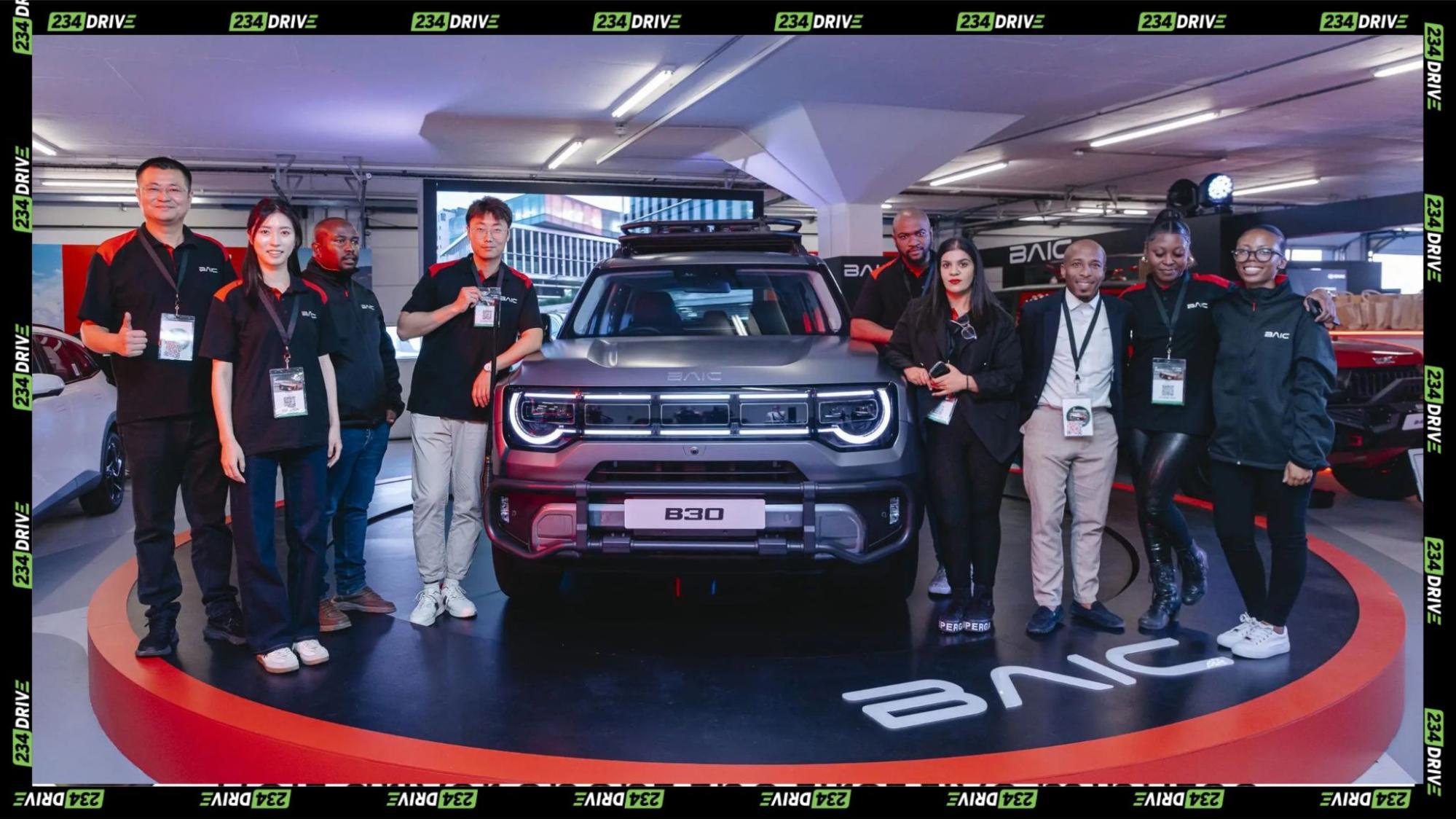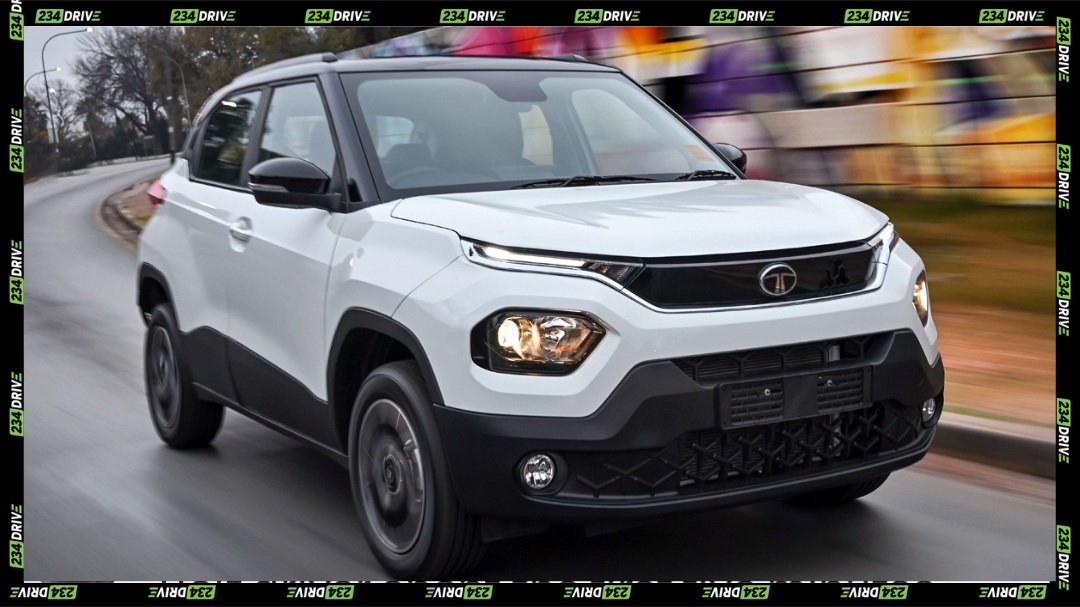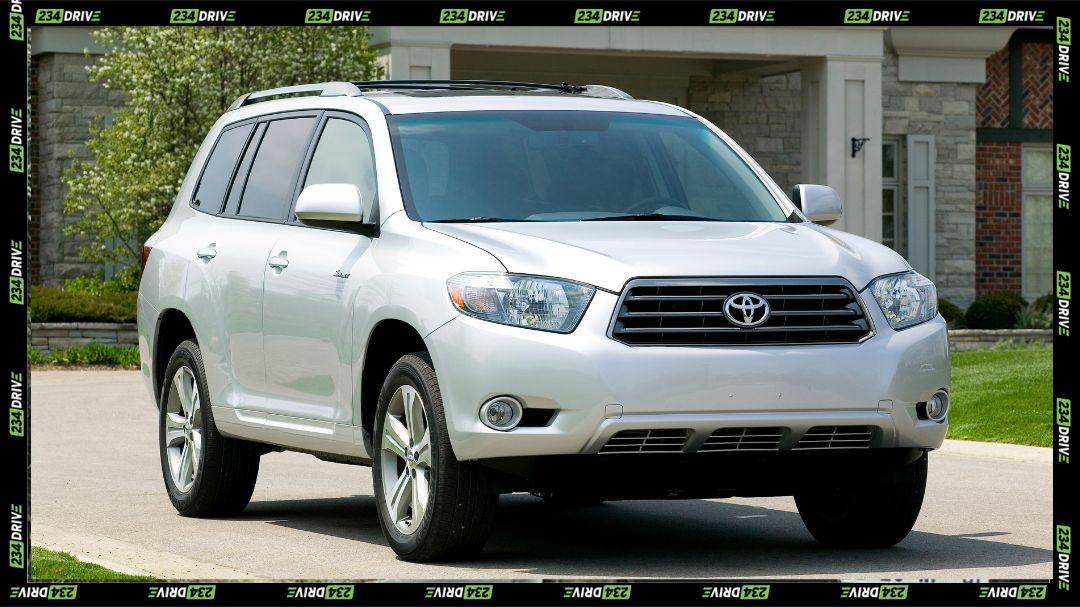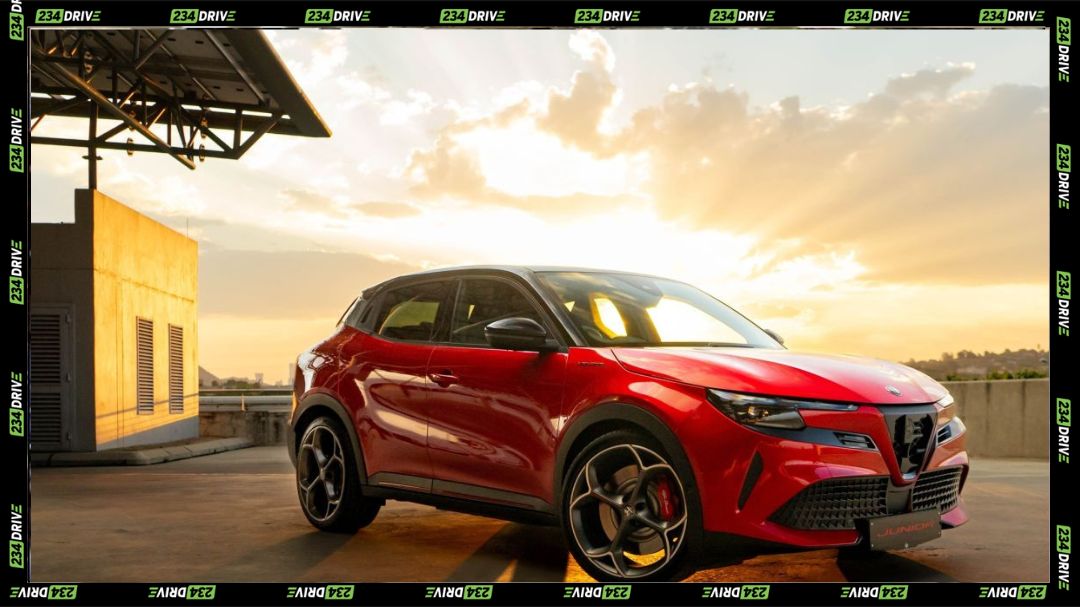The BYD Tang EV600 has become a standout name in the growing landscape of electric SUVs. Produced by the Chinese automaker BYD, this seven-seater blends practicality, performance, and innovation, showing how far China has come in EV engineering. The Tang EV600 goes beyond the typical SUV category, delivering a mix of family comfort, performance, and affordability that reflects the rapid evolution of electric vehicles.
BYD, short for Build Your Dreams, has carved a distinct identity as one of the world’s largest EV manufacturers and battery producers. The Tang EV600 sits at the core of its global expansion strategy, appealing to both domestic and international buyers with its premium design and cutting-edge Blade Battery technology. As part of the 2025 lineup, the Tang continues to impress with an improved range, upgraded platform, and expanded tech suite, challenging competitors like Tesla’s Model Y and Volkswagen’s ID.6.
Exterior Design and Road Presence
The 2025 BYD Tang EV600 features a commanding design language known as the “Loong Face,” inspired by the Chinese dragon—a symbol of power and confidence. The front end carries whisker-shaped LED lights and a sculpted bonnet that emphasises width and stance. At 5,040 mm long and nearly 2,000 mm wide, it dwarfs many competitors in size, establishing a bold road presence. The dynamic proportions and split headlamp design lend it a futuristic appearance, while aerodynamic elements like flush door handles and an integrated rear spoiler aid efficiency.
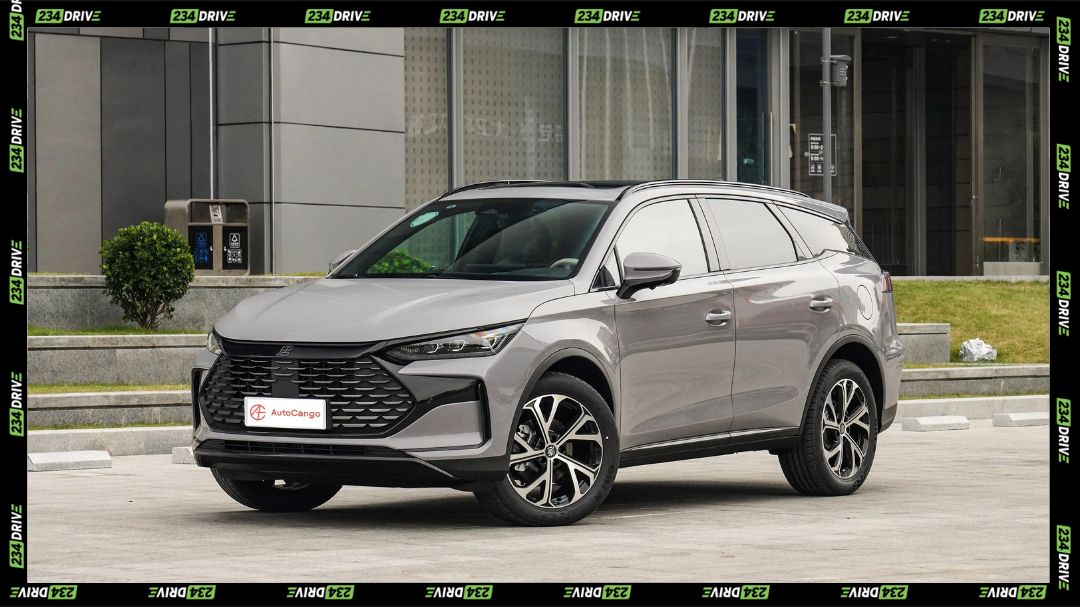
From the side, strong shoulder lines and chrome detailing create an executive look, while large alloy wheels (20 or 21 inches depending on trim) reinforce its muscular profile. At the rear, full-width LED taillights and a prominent BYD badge underline its premium positioning. The EV600’s exterior styling communicates luxury without being overly aggressive—a balance that appeals to both family buyers and business professionals.
Interior Comfort, Technology, and Performance
Stepping inside the Tang EV600 reveals BYD’s focus on modern luxury and intelligent design. The cabin uses soft-touch materials, leatherette seating, and a multi-colour ambient lighting system that enhances its premium atmosphere. A standout feature is the 15.6-inch rotating touchscreen powered by BYD’s DiLink system, which supports app integration, voice control, and 5G connectivity. The driver benefits from a 10.2-inch digital cluster, optional 26-inch head-up display, and even facial recognition for user profiles.
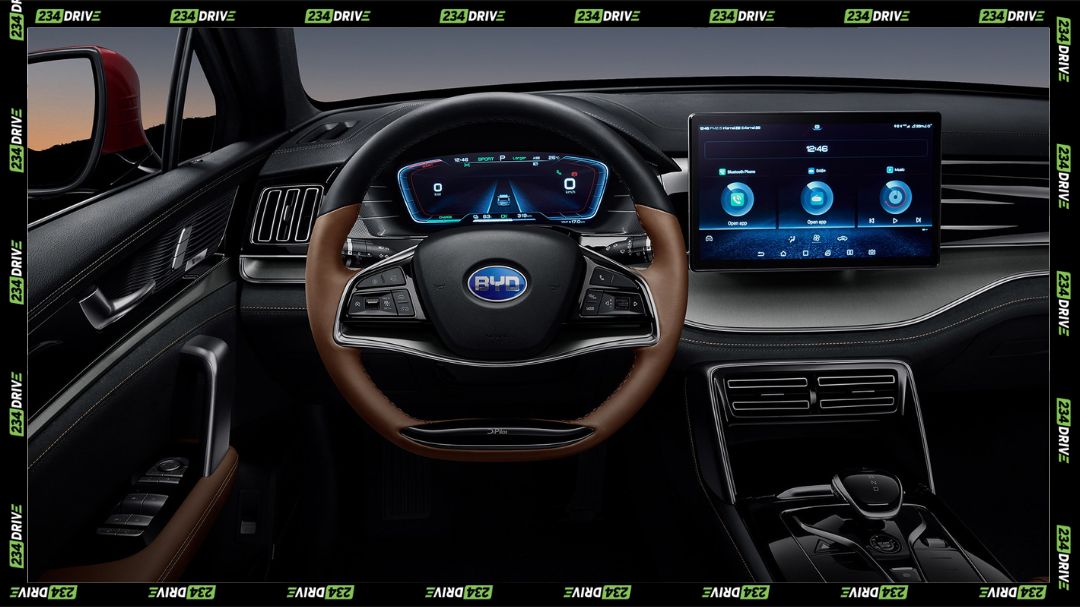
Practicality is another highlight—the seven-seat configuration offers flexible space for families, with the third row folding flat to create a generous cargo area of up to 1,960 litres. Higher trims include three-zone climate control, a refrigerator, and a fragrance diffuser, elevating the luxury experience. The Dynaudio-tuned 21-speaker sound system delivers crisp audio, turning the cabin into a mobile entertainment suite.
Powering the Tang EV600 is a choice of rear-wheel-drive (RWD) or all-wheel-drive (AWD) systems. The RWD model generates 500 kW (671 hp) and 420 Nm of torque, accelerating from 0-100 km/h in 6.9 seconds. The AWD version pushes up to 810 kW (1,086 hp) and 860 Nm, cutting that time to just 3.9 seconds—sports car territory for a seven-seater SUV. The ride remains smooth and composed, with independent suspension and advanced traction systems keeping the hefty body agile and stable at high speeds.
Battery, Range, and Charging
At the heart of the Tang EV600 is BYD’s signature Blade Battery technology—a lithium iron phosphate (LFP) setup renowned for safety and longevity. The 100.5 kWh (or 111 kWh in European models) pack offers up to 670 km of range under China’s CLTC cycle, translating to 460-530 km under the more realistic WLTP standard. Efficiency ranges between 17.4 and 19.1 kWh per 100 km, depending on trim.
Charging is equally competitive. The Tang supports 170 kW DC fast charging, reaching 80% in roughly 48 minutes, while standard 11 kW AC charging fully replenishes the battery overnight. V2L (vehicle-to-load) functionality allows owners to power devices up to 3.7 kW—ideal for camping or emergencies. A standard heat pump ensures optimal battery performance even in cold climates.
Pricing and Market Availability
The Tang EV600 represents one of the most value-oriented premium EVs in its segment. In China, prices start at around $33,700 (₦49.8 million) for the base RWD version and rise to $40,700 (₦60.1 million) for the fully loaded AWD trim. In Europe, pricing climbs to between €67,000 (₦99.0 million) and €70,000 (₦103.5 million), reflecting higher import and certification costs. Exported under names like Tang Flagship or Sealion 8, it arrived in European markets in late 2024 and is expected to reach Australia next.
For its price, buyers receive a complete package: generous performance, long range, refined interior comfort, and strong safety credentials. Euro NCAP awarded the Tang a five-star rating, with impressive scores of 87% for adult and child protection.
Why the BYD Tang Works in Nigeria
In Nigeria, the BYD Tang EV600 fits naturally into the country’s growing interest in electric mobility. With cities like Lagos and Abuja dealing with traffic congestion and rising fuel costs, an all-electric SUV of this size offers a modern alternative for both urban commuting and intercity travel. The Tang’s high ground clearance and strong suspension are well suited for Nigeria’s mixed road conditions, from smooth expressways to uneven rural routes. Its seven-seat layout appeals to large households, while the long battery range—over 500 km in real-world use—reduces range anxiety given the country’s limited charging network.
The Tang EV600’s LFP Blade Battery is another advantage in Nigeria’s hot climate, offering excellent thermal stability and safety against overheating. Maintenance costs remain lower than those of traditional petrol SUVs, and BYD’s expanding presence through African distributors means easier access to spare parts and technical support. For professionals and families alike, the Tang balances performance, comfort, and practicality, making it one of the most relevant EVs for Nigeria’s developing automotive landscape.
How it Compares With Rivals
Against competitors, the BYD Tang EV600 stands out primarily on value and performance. The Tesla Model Y offers comparable acceleration but with less space and a higher price tag. The Volkswagen ID.6 delivers a smoother ride on European roads but can’t match the Tang’s power or equipment list at the same cost. Li Auto’s L7 hybrid provides range flexibility, yet BYD’s full-electric platform offers cleaner operation and lower long-term maintenance.
In terms of durability, BYD’s Blade Battery has demonstrated exceptional life cycles—a key advantage for resale value. Maintenance costs are expected to remain low since the SUV lacks an internal combustion system, and warranty coverage is extensive: six years or 150,000 km for the vehicle, with a lifetime warranty for the battery for the first owner. Depreciation remains moderate compared to European EVs, helped by strong demand in both domestic and export markets.
Ownership Experience and Lifestyle Suitability
For urban and suburban drivers, the Tang EV600 offers comfort, tech, and reliability wrapped in a luxury shell. It fits seamlessly into family life, providing seven seats, high safety scores, and refined technology for long-distance travel. On rougher terrain or long road trips, the vehicle’s weight and ground clearance ensure stability, while all-wheel drive provides traction in unpredictable conditions.
Charging convenience continues to improve with the rollout of DC fast chargers across major highways and cities, particularly in Europe and China. For households installing home charging, the 11 kW AC port ensures consistent daily usability. BYD’s global partnerships with energy providers also strengthen its ecosystem, positioning the Tang EV600 as not just a car but a cornerstone of electric living.
Final Thoughts
The BYD Tang EV600 represents one of the most complete electric SUVs of 2025. It blends luxury, space, and cutting-edge battery safety at a fraction of the price of traditional European brands. Its mix of technology, comfort, and long-term reliability positions it as a realistic alternative for buyers seeking both performance and practicality in the premium EV market.
With the Tang EV600, BYD proves that electric innovation no longer belongs exclusively to the West—it is redefining the standard for family EVs worldwide. For potential owners, it delivers confidence on the road and a glimpse into the future of accessible luxury. Readers are invited to share their thoughts—does the Tang EV600 mark a turning point for global EV competition?


